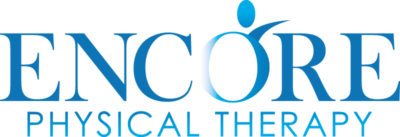Anterior Cruciate Ligament Injury (ACL) is a common ailment in the sports world, both for athletes in the big league and those at the backyard volleyball pit. Typically, the injury occurs when the foot is planted but the knee twists, causing damage to the ACL. Treatment and recovery take many forms, but your physical therapist can be a strong advocate for your success.
Early Intervention
The most common symptoms of a torn ACL are a loud popping sensation or sound in the knee, severe pain and inability to continue the activity, rapid swelling, loss of range of motion, and a feeling of instability when bearing weight. It’s important to seek medical attention if you experience these symptoms. With the ACL out of commission, the job of tackling weight and mobility transfers to the meniscus. If the meniscus tears, the risk of a long-term impact such as osteoarthritis increases significantly. With all of this in mind, it’s critical to get an accurate diagnosis and to stay off of your injured knee as much as possible to avoid further damage. The exam is basic and mostly non-invasive unless the doctor feels it’s necessary to insert a camera for a better look, a process called arthroscopy. You may also be sent in for x-rays or an MRI as needed to determine whether you should undergo surgery for the repair.
 Treatment
Treatment
The initial treatment for tears not requiring immediate surgery consists of rest, cold applications, and compression in the form of a knee wrap or brace. Many ACL tears heal with the proper care. If rest, ice, and compression don’t do the trick your doctor may recommend surgery. Whether you have surgery or not, you can rely on your physical therapist’s guidance throughout the process.
What to Expect from Physical Therapy
Without surgery physical therapy will target increased muscle strength, agility, and balance. Your therapist will also help you identify movements that can defer pressure from your knee so you can increase activity without further injury. Since each person’s response to an ACL injury is unique, your physical therapy plan will be customized for your situation.
If you undergo surgery, the recovery process will be somewhat different. In fact, your therapy will likely begin before you have the surgery in order to strengthen surrounding muscle groups, decrease swelling, and improve your range of motion.
Following surgery, the goals of therapy are to improve knee health and prevent subsequent injury. With this in mind, you will likely wear a brace for the first month or two to keep the knee from hyperextending. You will also rely on crutches initially, slowly working with your therapist to increase the amount of weight you can bear on your leg. Along with protecting the area, your therapist will help with pain control, improving your gait, and reduction of swelling. Over time, they help you increase strength, range of motion, balance, and flexibility. As you improve your therapist will support you towards personal goals such as getting back to an activity like swimming, climbing the hill to the mailbox, or even returning to contact sports such as football.
